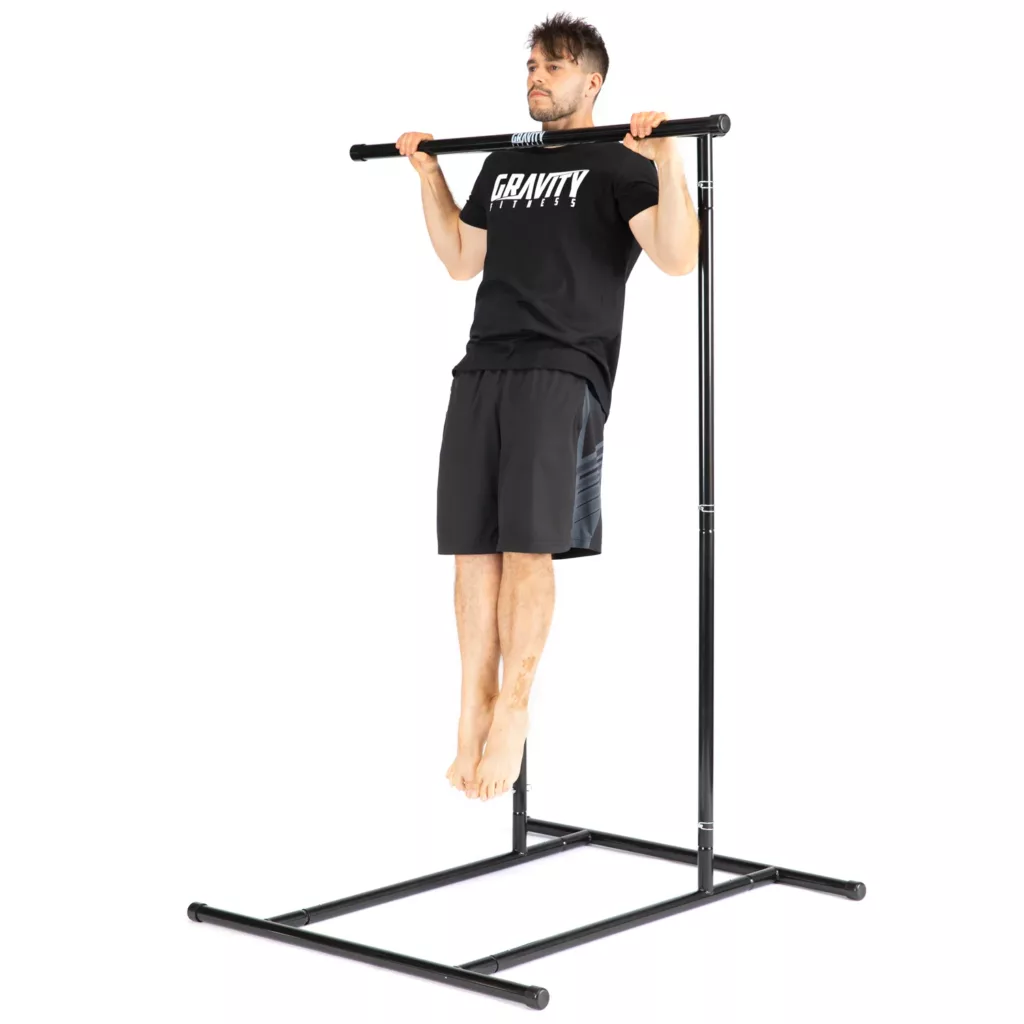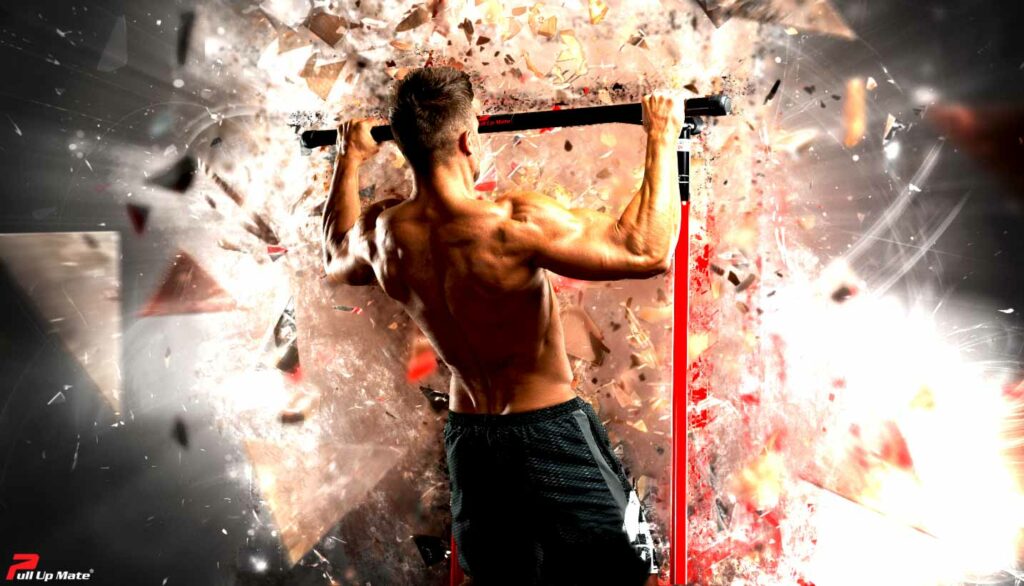Bodyweight training is quite popular across all fitness domains in the world today. And perhaps the most popular exercise utilized by fitness enthusiasts is the pull-up. But be aware, there is a distinct difference between pull-ups and chin-ups. And both offer your body specific benefits.
Aren’t pull ups and chin ups the same thing?
Calling pull-ups and chin-ups the same is like calling a road bike and mountain bike the same. They both cause a similar effect on the body, but in a different way. I wouldn’t go as far as using the apples to oranges comparison, but there are definitely differences that make each exercise unique and valuable in your bodyweight training protocols.
I’m now going to proceed to do a Q & A below to answer the most common questions asked about pull-ups and chin-ups just so we can finally clear the air. Pay attention!
What is the hand position?
Hand position is the easiest way to tell if someone is doing a pull-up or chin-up. In fact, I can spot this in two seconds from the other side of the park when I’m outside.
A pull-up is performed when you wrap your hands around the bar and your palms face away from your body. This is also known as a pronated grip. It doesn’t matter how wide or close your hands are. If they’re facing away from you, it’s a pull-up.

That leaves only one option for chin-ups. If you guessed that your palms are facing you, then you win the big money! Anatomically, this is known as a supinated grip. The same rules apply. Any width of the hands still construes the exercise as a chin-up, provided your palms are facing you.

GRAVITY FITNESS PULL UP BAR
Portable, versatile, home fitness
- Highly versatile- suitable for a full range of exercises including pull ups, dips, leg raises, incline press ups and front and back levers
- Extended height: 192cm
- Compact position height: 120cm
- 3-year warranty against manufacturer defects
- Carry bag included
ONLY £139.95 £109.95
What muscles do they work?
A pull-up specifically targets the lats, deltoids, traps, biceps and rhomboids. These are the muscles of your back, shoulders and front of your arms.

The chin-up works these exact same muscles, but here’s the difference. Your biceps get recruited more heavily. This is because the flexion of your elbows is more direct. It’s similar to doing a barbell biceps curl, but from a hanging position.
And in case you are unaware, flexion is a motion that involves shortening the angle between your forearm and upper arm. Extension is the complete opposite.




Need Something to Train On at Home?
With Pull Up Mate no longer available, it's the only real option.
Which one is easier?
Since you get more recruitment from your biceps with a chin-up, they are easier to perform. This doesn’t mean they aren’t as good or you should stop doing them. Both exercises have value and should both be integrated into your routines.
The more variation you add, the more muscle fiber you will recruit. And thus, the more defined and strong you will be.
What about my abs?

People who do a high number of pull-ups and chin-ups often have abs of steel, and justifiably so. When done correctly, your abs get probably just as much work as your back, shoulders and arms. These are known as upper body exercises. Well the abs are above the belt, so they’re technically in the upper body.
You might be thinking how or why? Well here’s your answer. Any time you do a pull-up or chin-up, you need to create a tremendous amount of tension in your midsection to generate force. This translates to a solid ab contraction that lasts the entirety of your set of reps.
The long and slow tension transfers to a high amount of workload, which makes your abs defined and solid. Couple that with a decent caloric expenditure and your abs are sure to please you and any onlookers who get to see them.
Just realize that you need to execute perfect form and technique to get this affect. Sloppy, choppy pull-ups and chin-ups will get you only marginal results at best.
How do you do each one properly?
Pay close attention to the following instructions because there are plenty of people roaming the streets that do pull-ups and chin-ups with terrible form. Don’t be one of them!
For a conventional pull-up, grip the bar with a shoulder or slightly wider than shoulder-width grip and come into a dead hang with your arms fully extended. Either wrap your thumbs around the bar or tuck them in by your index fingers. I personally like to wrap them around but some favor the other position.

Pull your shoulder blades down and inward and move your hips forward slightly.
Keep your legs straight and together, and at a slight angle.
Squeeze your abs forcefully and look up at a slight angle.

You are now ready to do a pull-up. And just for the record, this is called the hollow body position.
Take a big inhale and pull yourself up in one smooth, flowing motion.
Exhale forcefully as you do this and stop when your chin clears the bar.
Slowly lower yourself all the way back down until your arms are fully extended and repeat.
Unfortunately, people tend to sway back and forth, and not come to full arm extension at the bottom position. This is the case with high volume training and doing as many reps in as short of a time span as possible. By not taking your time and going through a full range of motion, you risk developing shortened muscles, which can cause bad posture.
Plus, doing fast reps REALLY takes its toll on your hands. More importantly, the skin on your hands takes a beating.
For a chin-up, follow the exact same instructions, except have your hands turned so your palms face your body.
Position them shoulder-width or slightly less this time and then pull yourself up to the bar. Come all the way back down and repeat.
Pull-ups and chin-ups are not meant to be done in high amounts. That’s when you start getting sloppy. Focus instead on doing high sets of low reps and take as much rest between sets as you need. Trust me, you’ll still make progress!
What about an alternating grip?
Good question! This is a hybrid where you can get the best of both worlds. On one side, your biceps will get more recruitment and on the other, your lats will get more recruitment. It is best to do a few reps, then immediately switch hand positions and do a few more. Voila! You have balance, which is very important.
Do they affect the hands differently?
Hand care is really important when it comes to doing a high volume of pull-ups and chin-ups. But overall, pull-ups do place a little more stress on your hands. Regardless of the exercise, you can safeguard your hands by wearing gloves.
Just make sure they are light, thin and strong, and do not restrict your movement. But be aware that over time, your hands will adapt to bar training. The skin will get tougher and you’ll develop callouses, which are your body’s built-in defense mechanisms.
Which one is easier to do variations with?
Doing just pull-ups and chin-ups can get boring after a while. That’s why people look to variations to satisfy their whim. If you were to bring your hands in closer and lean backward so your body is pitched at about a 45-degree angle, you will actually get a nice chest workout. This is one of many variations you can do.

Exercises like muscle-ups, dips, skin-the-cats, hanging wipers and pikes are all easier to do with an overhand grip.
But that doesn’t mean you can’t get fancy from a chin-up position. Take L-sits for example. You can do a chin-up, then pull your legs up so your body forms an “L” shape. Then when you lower yourself back down, lower your legs so your body is straight. These are actually easier with chin-ups than pull-ups.
Once you get strong enough, you can just get your body into an L position and hold it throughout the entire movement. This really taxes your abs while you target the rest of your upper body.
Where do I begin?
This is actually a pretty easy answer. One pull-up or chin-up at a time. If that’s all you can do than that’s all that ever matters. Practice doing sets of one for as long as you need to. Then one will turn into two, and two to three and so on.
Remember that quality always trumps quantity. Learn how to do the skill with proficiency first and the rest will fall right into place. And never be ashamed to use a spotter to watch your form in the beginning. Bend your knees and have them press into your lower shins while you pull yourself up.
Think of this as using a booster seat as a child. The goal then was to get square to the table so you can eat properly. The goal with your pull-ups and chin-ups is to master the movement pattern and build baseline strength so you can eventually do them on your own.
Closing Comments…
Practice always makes perfect. Use your Pull Up Mate often and what you put into your training is exactly what you’ll get out. Just make sure to always listen to your body and do not over train. Simply put, never let ego be in control.




